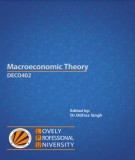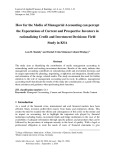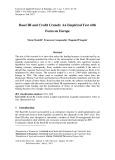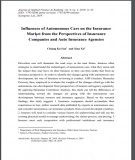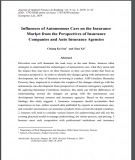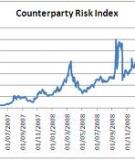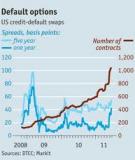
Rationalizing credit
-
Part 1 of ebook "Money, banking and financial markets in Central and Eastern Europe: 20 years of transition" provides readers with contents including: the spread of the financial crisis to Central and Eastern Europe; are product market structures affected by banking concentration; financing constraints, credit, rationing, and financing obstacles; efficiency, persistence and predictability of Central European stock markets; non-linear stock market co-movement in Central and East European countries;...
 157p
157p  tuongnhuoclan
tuongnhuoclan
 27-11-2023
27-11-2023
 5
5
 4
4
 Download
Download
-
Part 2 book "The economics of banking" includes content: Credit rationing; securitization; the structure of banking; bank regulation; risk management; the macroeconomics of banking.
 134p
134p  oursky03
oursky03
 21-08-2023
21-08-2023
 5
5
 3
3
 Download
Download
-
Ebook Macroeconomics Theory: Part 2 presents the following content: Money Supply: Definition of Money and Importance of Money; Money Multiplier and Credit Creation by Commercial Banks; Equilibrium in Product and Money Market; Effect of Monetary Policies Under Different Cases in IS-LM Framework;...Please refer to the documentation for more details.
 139p
139p  chankora
chankora
 16-06-2023
16-06-2023
 6
6
 2
2
 Download
Download
-
Lecture Money, banking & finance - Lecture 10: The credit channel. This lecture re-examines the transmission mechanism in the context of the credit channel. It examines the micro-foundations of credit rationing and the channels that describe the credit mechanism.
 44p
44p  runordie1
runordie1
 10-05-2022
10-05-2022
 11
11
 2
2
 Download
Download
-
The purpose of this paper is to explore the causes of financing difficulties of small and medium-sized enterprises in the Asian context. Recent literature suggests that lack of capital is the most severe constraint for SMEs’ survival and growth. Financing remains a critical constraint for several reasons. Information asymmetry between banks and SMEs retards the loans applications and underdeveloped equity markets deny SMEs future growth opportunities.
 17p
17p  viuchinaga2711
viuchinaga2711
 21-10-2021
21-10-2021
 16
16
 1
1
 Download
Download
-
The study was to determine the effect of accessibility, the effect of the cost, the effect of mobile credit loan amount and the effect of regulation on performance of micro and small enterprises. The study was anchored on various theories of Resource based view, Dynamic capabilities, Diffusion of technology, Credit rationing, and the asymmetry of information.
 27p
27p  nguaconbaynhay12
nguaconbaynhay12
 08-06-2021
08-06-2021
 21
21
 1
1
 Download
Download
-
The study aims at identifying the contribution of media management accounting in rationalizing credit and making investment decisions. Results of the study indicate that management accounting contributes in rationalizing credit and investment decisions and its stages represented by planning, negotiating, completion and integration, identification and estimation of the merge- related results. The study recommends the need for further attention to the role of management accounting and its tools.
 21p
21p  trinhthamhodang2
trinhthamhodang2
 21-01-2020
21-01-2020
 23
23
 1
1
 Download
Download
-
The aim of this research is to show that unless the lending business is incentivised by an appreciable earnings potential the effect of the enforcement of the Basel III capital and liquidity requirements is sure to be a credit crunch. Initially, this empirical research hypothesis was tested against a number of independent variables reflecting trends in lending volumes; subsequently, these variables were used to establish if the risks of default that corporate borrowers face under the impact of credit rationing are likely to be heightened by other factors.
 10p
10p  trinhthamhodang2
trinhthamhodang2
 21-01-2020
21-01-2020
 30
30
 1
1
 Download
Download
-
Using data from a survey for the companies of the Region Souss-Massa (RSM), we study the determiners of credit self-rationing. Our definition of discouraged companies is for businesses if they do not apply for bank credit when they would have asked for their financial position to be illustrative. We use logistic regression and we study the characteristics of the company and those of the administrator who can affect this type of credit rationing.
 1p
1p  chauchaungayxua2
chauchaungayxua2
 19-01-2020
19-01-2020
 9
9
 1
1
 Download
Download
-
Using data collected from a leading P2P platform in China, this paper empirically tests the discrimination of investors on the occupational identity of borrowers in online lending. I find that P2P investors discriminate against borrowers who are salary earners in terms of occupational identity while preferring borrowers who are private entrepreneurs. Moreover, this kind of discrimination can be found in borrowers both with high credit ratings and low credit ratings.
 1p
1p  chauchaungayxua2
chauchaungayxua2
 19-01-2020
19-01-2020
 9
9
 1
1
 Download
Download
-
Explaining away the mystery of debits, credits, and double-entry bookkeeping, a thorough but simple guide also helps readers set up a company's books, monitor expenses, create budgets, pay taxes, and manage cash. You're no idiot, of course. You hire and manage talented people, carry out your daily tasks with grace, and even find ways to shine under deadline pressure. But when it comes to finance and accounting, you feel like you're in the red.
 322p
322p  haiduong_1
haiduong_1
 03-04-2013
03-04-2013
 69
69
 10
10
 Download
Download
-
When currency f lows back to the Reserve Banks, each deposit is counted, verif ied, and authenticated. Notes that are too worn for recirculation (un- f it notes) and those that are suspected of being counterfeit are culled out. Suspect notes are forwarded to the United States Secret Service, and unf it notes are destroyed at the Reserve Banks on behalf of the Treasury. Notes that can be recirculated to the public are held in Reserve Bank vaults, along with new notes, until they are needed to meet demand. Coin that is received by Reserve Banks is...
 27p
27p  machuavo
machuavo
 19-01-2013
19-01-2013
 62
62
 2
2
 Download
Download
-
To avoid credit rationing, banks use other methods to screen potential borrowers. 24 For example, banks can use extensive and comprehensive covenants on loans to mitigate agency costs. As new information arrives, covenants can be renegotiated. Covenants may also require collateral or personal guarantees from firms about their future activities and business practises in order to maximise the probability of repayment. The banks lending history produces valuable information that evolves over time.
 67p
67p  machuavo
machuavo
 19-01-2013
19-01-2013
 40
40
 2
2
 Download
Download
-
The issue of the equilibrium level of credit in the economy is addressed in the liter- ature from di®erent perspectives. Several papers use theoretical models to analyze the equilibrium level of credit over business cycles by identifying phases of credit rationing or credit booms (Kiyotaki and Moore, 1997; Azariadis and Smith, 1998; Lorenzoni, 2008). In the similar spirit, DSGE models have been used recently to analyze the asymmetry in the behavior of borrowers and lenders in reaction to structural, and in particular ¯nancial shocks (Iacoviello, 2005; Gerali et al., 2010)....
 61p
61p  enterroi
enterroi
 01-02-2013
01-02-2013
 48
48
 8
8
 Download
Download
-
What can and should be done on crisis prevention and management for the future? In recent weeks, the official sector has begun to provide its answer: from the 220-page US Treasury blueprint for an overhaul of the US regulatory structure released this past Monday (I read it all but it was difficult), to the initial reports of the President’s Working Group on Financial Markets, to the initial report of the Financial Stability Forum, to the report of the senior supervisors from the G-5 countries.
 11p
11p  enter1cai
enter1cai
 12-01-2013
12-01-2013
 90
90
 2
2
 Download
Download
-
In Section V, we discuss how our theory contributes to the literature on contracting with timeinconsistent or irrational consumers and relates to neoclassical screening. We are not aware of a theory with rational time-consistent borrowers that explains the key contract features predicted by our model, and we argue that natural specifications do not do so. Because the main predictions of our model are about repayment terms, the most likely neoclassical screening explanation would revolve around heterogeneity in borrowers’ ability to repay the loan early.
 16p
16p  enter1cai
enter1cai
 12-01-2013
12-01-2013
 43
43
 1
1
 Download
Download
-
Consistent with real-life credit-card and subprime mortgage contracts but (we argue) inconsistent with natural specifications of rational time-consistent theories, in the competitive equilibrium of our model firms offer seemingly cheap credit to be repaid quickly, but introduce large penalties for falling behind this front-loaded repayment schedule. The contracts are designed so that borrowers who underestimate their taste for immediate gratification both pay the penalties and repay in an ex ante suboptimal back-loaded manner more often than they predict or prefer.
 19p
19p  enter1cai
enter1cai
 12-01-2013
12-01-2013
 56
56
 2
2
 Download
Download
-
In a competitive world of symmetric information and costless enforcement, credit contracts could be written conditional on borrower behavior. Borrowers would then have access to loans under any interest rate-collateral combination that would yield lenders a zero expected profit. However, as a large literature has shown, information asymmetries and enforcement costs make such conditional contracting infeasible and restrict the set of available contracts, eliminating as incentive incompatible high interest rate, low collateral contracts.
 15p
15p  enter1cai
enter1cai
 12-01-2013
12-01-2013
 52
52
 6
6
 Download
Download
-
A much cited simile coined by Alan Greenspan (2000) is that bond markets can act like a “spare tyre”, substituting for bank lending as a source of corporate funding at times when banks’ balance sheets are weak and banks are rationing credit. This was the case in the early 1990s in the United States, and there were some signs of it in Hong Kong in the late 1990s, when domestic banks adopted a conservative lending stance as property prices collapsed.3 Conversely, banks may substitute as a source of funds when bond markets dry up, as occurred following the Russian default in 1998....
 17p
17p  taisaocothedung
taisaocothedung
 12-01-2013
12-01-2013
 33
33
 2
2
 Download
Download
-
By encouraging these lending practices, usury ceilings may fail to give consumers the protection and benefits that they were intended to provide. That is, usury laws may actually reduce the amount of credit that is available to low income or inexperienced borrowers. Low-priced credit is not useful to those who cannot meet the requirements for obtaining it. Thus, when lenders ration credit by some means other than price, first-time borrowers, small borrowers, low-income and high-risk borrowers are likely to find it more difficult to obtain credit.
 20p
20p  taisaocothedung
taisaocothedung
 09-01-2013
09-01-2013
 57
57
 2
2
 Download
Download
CHỦ ĐỀ BẠN MUỐN TÌM











